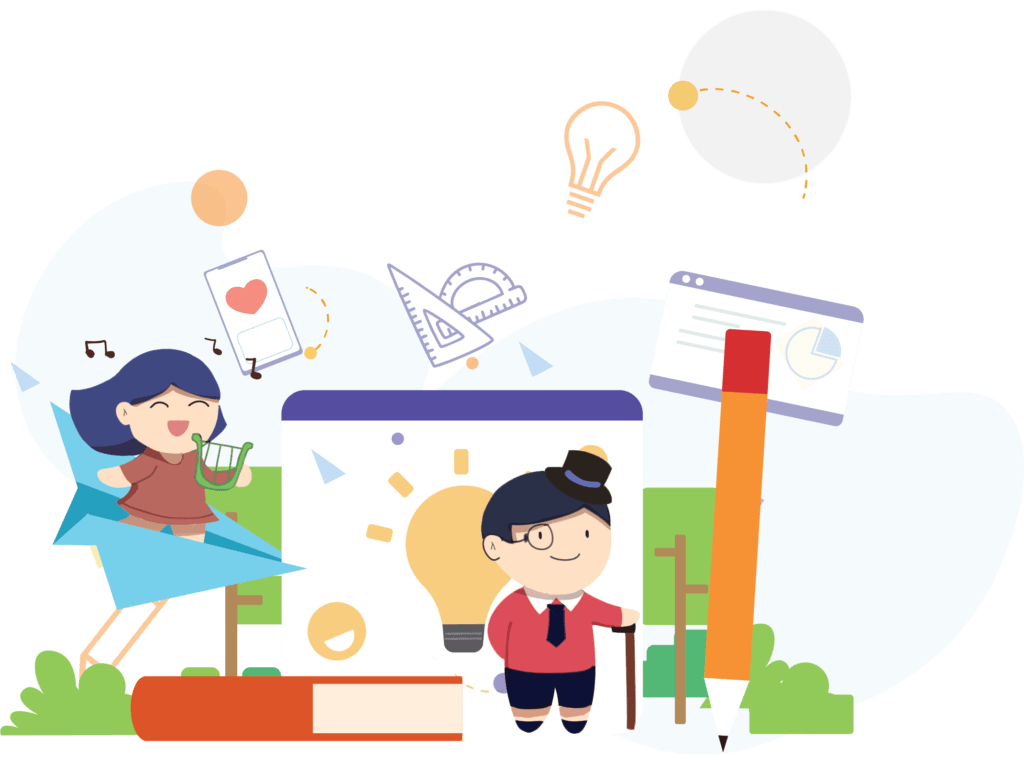What is Multiple Intelligences?
Teachers, educators, and experts are constantly searching for new ways to keep students interested in and actively engaged with their studies. This has resulted in a variety of ideas concerning students’ learning styles. teachers’ preferred methods of instruction and various approaches to improving students’ academic performance. Howard Gardner proposed the theory of multiple intelligences in 1983. The term “multiple intelligences” is used to talk about a theory that tries to classify the different ways that students can learn and understand things.
There has been a significant shift in understanding of intelligence since the concept of multiple intelligences was proposed. According to this theory, people make use of a wide variety of intelligence and learning styles in their everyday lives.
Some learn best by experiencing it or doing it on their hands, while some do better when reading and writing, and others enjoy or do better at solving mathematical problems.
Though everyone has some proficiency in all intelligences, everyone also has one that stands out as extremely powerful.
Different Types of Multiple Intelligences

In order to ensure that every child has the chance to learn in a way that is most effective for them, it is necessary to employ teaching methods that integrate a wide range of these multiple intelligences.
According to the theory, there are eight distinct types of intelligence:
1. Linguistic Intelligence – A person who has the ability to understand what he or she reads or writes. They are also good at or can easily learn a new language.
2. Spatial Intelligence – People with this skill set usually have a natural sense of direction and navigation, and they are great at using maps, charts, videos, and photos, among other visual aids.
3. Mathematical Intelligence – These people are good at computers, can use logic to solve a wide range of problems, and can find and understand patterns in numbers and relationships between symbols.
4. Musical Intelligence – These individuals have a high level of musical intelligence and a unique capacity to conceptualize thoughts in terms of chord progressions, rhythmic structures, and other musical ideas. There are a ton of benefits for them, but one of their strongest points is that they write and perform their own music.
5. Naturalistic Intelligence – The term “naturalistic intelligence” is used to describe an individual’s ability to see and value the world around them. They are capable of distinguishing, identifying, observing, and categorizing natural phenomena such as animals, plants, and the environment.
6. Bodily-Kinesthetic Intelligence – A person with bodily-kinesthetic intelligence is one who thinks with and through their body to make things or figure out solutions. They are great with physical movements and other physical performances.
7. Interpersonal Intelligence – These people have strong communication skills, a broad perspective on human behavior, and a talent for teamwork. They pick up on the vibes, feelings, and attitudes of the people around them quite easily.
8. Intrapersonal Intelligence – A person’s ability to recognize and understand their own feelings, thoughts, and values.
Importance of Multiple Intelligences
Based on the theory of multiple intelligences, there are many different ways to teach content if a teacher is having trouble getting through to a student through more traditional ways of teaching, like language or logic.
To make learning more accessible to all students, it’s helpful to know about and have access to a variety of teaching strategies from which everyone may benefit.
Learning about different learning styles, challenging material, and prevalent theories will be a huge help in assisting them to study more successfully.
While it’s true that no single approach to education will work for every student, understanding the several learning styles and philosophies will help you better understand your own child’s learning style and where they need improvement. Though some of their methods have been criticized, you should not rule out trying them with your children to see which ones work best for them.
How Can Parents Help Their Children?
Here are some things you can do with your kids to help them get smarter and develop their multiple intelligences.
Linguistic Intelligence:
- Always read aloud to your children and encourage them to read daily.
- Make them write a daily journal.
- Make it a daily habit to study and employ a new term.
Spatial Intelligence:
- Get some training in the arts by enrolling in a course.
- Explore the fundamentals of digital media, including photography, filmmaking, and more.
- Play puzzle games.
- Spend time making drawings and paintings.
Mathematical Intelligence:
- Engage your kid in competitive games like chess, dominoes, and Clue.
- Encourage your kid to do some simple arithmetic.
- Integrate mathematics into your child’s everyday life by teaching him or her new math skills while doing other activities (such as cooking, shopping, etc.).
Musical Intelligence:
- Get your kid into some music classes.
- Attend live performances of music with your kids.
- Sing together during your free time every day.
Naturalistic Intelligence:
- Plant together some flowers or vegetables.
- Go for a walk in the forest.
- Travel by bike through scenic landscapes
- Classify the flora, fauna, and wildlife you encounter on your travels.
Bodily-Kinesthetic Intelligence:
- Encourage your kid to join a sports team.
- Indulge them in daily physical activity.
- Teach them some basic sign language.
Interpersonal Intelligence:
- Let them make small talk with strangers on the street.
- Encourage them to be a team leader for activities.
- Encourage them to join different organizational clubs in their schools.
Intrapersonal Intelligence:
- Practice some meditation together.
- Encourage them to try to read and do the advice offered in self-help books.
- Find something to do that will set yourself apart from the crowd.
In sum
It can be challenging to create an environment that encourages learning for students with a wide range of intelligence, and also some types of skills may not be well suited to group work.
However, even if it’s not possible to meet the needs of all students’ intelligence profiles, teachers should do everything they can to give students as many chances as possible to learn in the way that works best for them.







